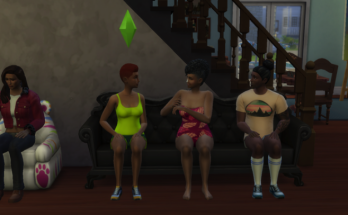Bu HannahAdelstein
The United States is the world’s biggest consumer of Facebook, citing over 155 million active users. Though the United States is ranked at number one for Facebook use, the social network is also wildly popular in less western cultures (example: India). Social Networking is a participatory form of media. It creates a media convergence by tying together all different aspects of culture. Using the fashion industry as an example, social networking allows consumers to participate in both production and design. Another example of this media convergence is the use of social media in government. Social media has been exceedingly influential in the last few presidential elections and it was what drove the Arab Spring. Another example of this can be found in journalism. Social media has changed journalism because it changes who is writing and who is reading news. Users, as opposed to publishers and editors, decide what constitutes news. Social media has also been revolutionary in the field of healthcare. It is now easy to go online and search medical conditions and hear from others who are suffering from something that you have. It offers support for those who are dealing with medical problems (for example, Patientslikeme.com)
The objective of Greenhow’s talk was to shift the goals, means and practices of education. She admits that for the next generation, computer, internet and social networking skills will be near mandatory for most jobs. Greenhow reiterates how important it is for kids to be learning how to social network as it is becoming more and more of a requirement in most fields.
Young people make up the majority of social networking sites. It is where they spend most of their leisure time. Many high schools around the world have blocked social media sites from their servers.
Greenhow’s first research question was three fold:
1) what is going on in online youth inspired spaces
- myspace, facebook, tumblr etc
2) how do these practices align or fail to align those valued in formal education?
3) How can it be used to innovate?
Greenhow states that by giving young people access to social networks the outcome would yield, a sense of identity, social learning, literacy and social capital. She also cites social media as a potential producer of
1) a wide view of learning
- education existing across many spheres
2) identity interest and learning
- seeds and drivers of learning
- signaling of students interests and identity
Greenhow’s main project was an investigation of teen’s use of Myspace. Myspace was one of the original social networking platforms. Greenhow began describing her experiment by explaining what constitutes a “social network” platform.
1) personal profile
- text, photos, music, videos, color, layout, background, etc
2) multi-modal communication
- posts
- chats
- messages
3) visible connection
- who knows who?
- Network building
In her Myspace investigation, Greenhow focused her study on students (juniors and seniors in high school) from low income families. Her methods to obtain her research information included focus groups, interviews, “think alouds” and becoming myspace friends with her research subjects (for context analysis).
Her research found that Myspace (as well as other social networks) create a self discourse. They allow for identity work, dynamic and self styled statements, playfulness with identity, and they give the students a sense of agency they wouldn’t otherwise have.
Her research also showed that social networking allowed for the furthering of social learning. Students can support and help each other with school work during leisure time they spend online. It also gives teens a place for letting out emotions or venting. It can serve as a stress release for many users.
Social networking allows for interest development and advocacy. It promotes and allows users to explore their personal interests. It gets users involved and it deseminates information.
Social media gives users social capital. Social networking can give users information, influence and social credentials.
Greenhow asks the question, “does social media bridge and bond social capital?” yes. This is done by profile identity. It is also done through ambient awareness in social networks (newsfeed, keeps users in social loop, encouraging social interaction, low cost feedback (likes))
Greenhow’s final points were on the topic of how to design social media spaces specifically for the field of education.
Social media is already employed by many fields of education, the most prominent being at the university level. Universities use social media platforms for purposes of recruiting. Social media has also begun to play an active role in the classroom. Students can now share comments and ratings of their professor so other can benefit from their experience with certain professors. Students have been noted to award higher ratings to professors who are active on some form of social media.
She also discusses how social media encourages and communicates literacy. She suggested a usage of “mirco-blogging” practices in both teaching and learning for higher engagement and interaction.
For uses un education she thinks that it is essential to include a custom profile, something that marries people with content. Something designed for conversation, interaction and sharing. She also noted that having something that is located within an already popular platform (IE facebook) aids in getting and keeping young people involved. In her research, she found that platforms like this within education increase interest in topics, motivate interaction between like-minded students, incentuize students to learn more about scientific topics and become engaged in civil engagement activities.
Her research also highlights social media and its relationship to science literacy. Social media has the means to share socio-scientific isssues and allows for argumentation and societal moves. Social media also allows for new forms of collaboration and civic engagement in ways different than we have seen in the past, ways that are more accessible and comprehendable for young people.
Online teaching, classes and general education are also ways social media can be employed by the field of education.
I really enjoyed this talk, I didn’t think it would be as fascinating as it ended up being. Catherine Greenhow was well-spoken and accessible to the audience.

